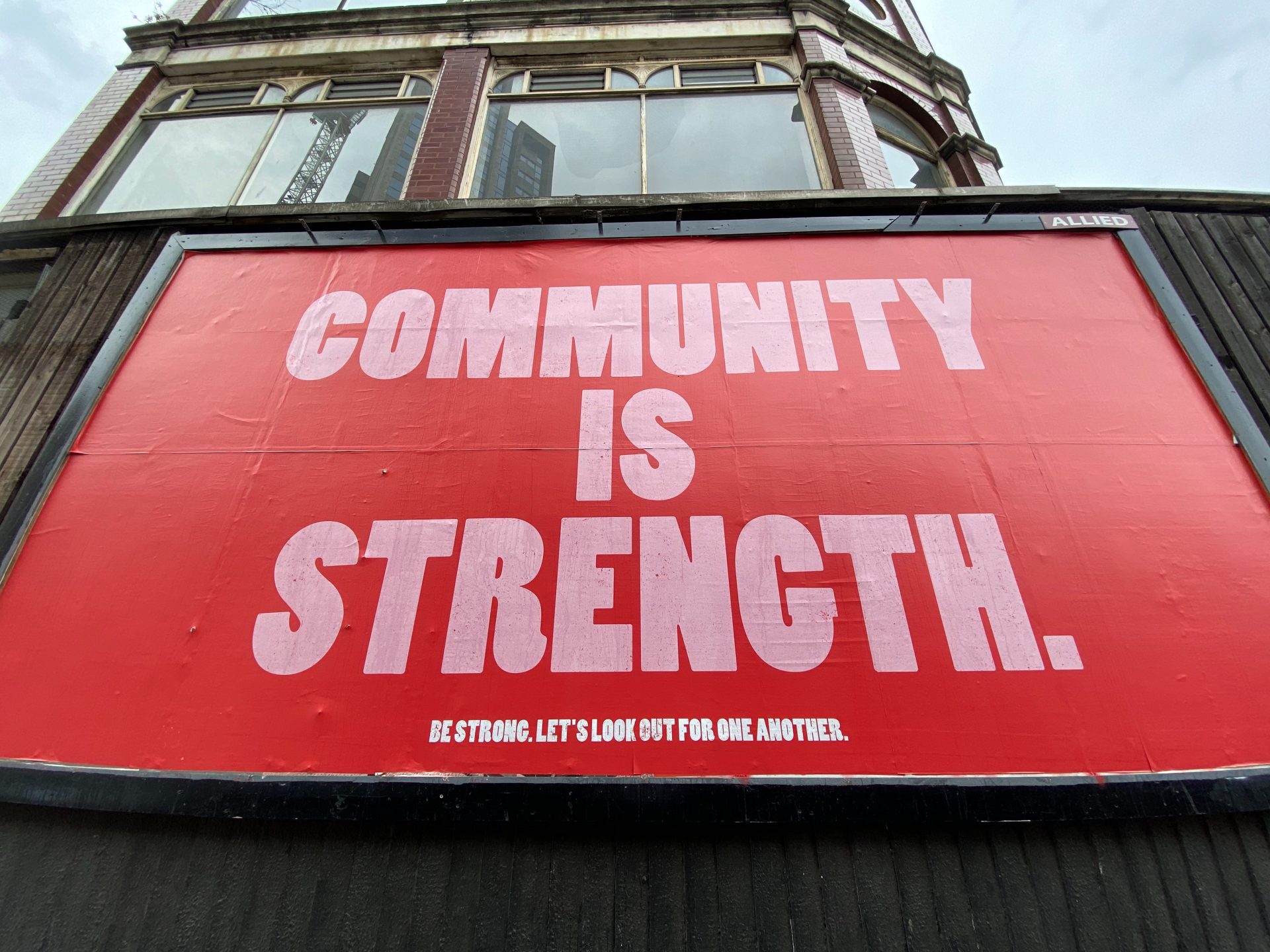
Newsletter
Newsletter
For media community strategies to succeed, a clear proposition with the right culture will help avoid the mistakes of the past.
26th January 2024

In the Pugpig weekly media bulletin, Pugpig’s consulting services director Kevin Anderson and digital growth consultant James Kember distill some of the best strategies and tactics that are driving growth in audiences, revenue and innovation at media businesses around the world.
If you want to know more about how we are working with publishers like you, get in touch at info@pugpig.com.
We have entered the third era of community strategies in digital media. This era begins with a sense of urgency as publishers seek to deepen their relationships with audiences, cut out the intermediaries of social networks and increase ARPU. To succeed, publishers will need to not only be smart about their technology choices but also understand that community strategies require a different relationship with what Jay Rosen referred to as the “people formerly known as the audience”.
The first era of community strategies in digital media came with the rise of blogs in the early part of the century. Outside of traditional media, blogs were a personal publishing revolution. Jeff Jarvis spoke about how news had shifted a lecture to a conversation. For many media outlets, their response to blogs was to create forums or add comments at the bottom of articles. Some publishers and broadcasters, such as the BBC, launched their own blogs. The rationale was that engagement would increase time on site and lead to stickiness.
However, the second era of community in media began soon after – the rise of social networks. Audiences flocked to these platforms, and eventually, most interaction happened there not on traditional media sites. Eventually, those early on-site community projects were shuttered. NPR, Reuters, Recode, The Verge and USA Today closed their comment sections. As NPR’s public editor said of the decision, “The audience itself has decided for NPR, choosing to engage much more via social media, primarily on Twitter and Facebook, rather than in the NPR.org comments section.” Unfortunately, outsourcing their relationships to audiences on social platforms has had disastrous effects on publishers.
Now, with the end of the Platform Era, publishers are looking not only to reclaim those relationships but also to use memberships and community to upsell the most loyal and engaged segments in their audiences.
When launching a community strategy, the most important thing is to have a clear proposition. You have to give your audience a clear sense of the value of joining your community and also what their role will be in the community. Will they participate and contribute or merely have access to unique events and experiences where the primary social link will be with other people who share their interests?
Overall, it’s important to distinguish between the different relationships that a publisher or broadcaster will have with their audience, and to do this, it’s useful to consider the differences between subscription, membership and community models. Subscriptions are a transaction. People are paying for access to your content, and they expect a frictionless, convenient experience. Membership can be about exclusivity or community. It depends. If it based on community, then it is a feeling of belonging to a group of like-minded people and for highly engaged members of your community, it can be about contributing to your mission in more ways than just giving money.
To seize the community opportunity, the proposition needs to be focused. Andrew Losowsky, Head of Community Product at Vox Media, used the metaphor of a food bank. If they placed 100 donation boxes on random street corners, a lot of people might think that they were just for rubbish or garbage. But if you placed donation boxes at the largest supermarkets in the community and were clear about what you wanted, you’ll be far more successful. The strategy is intentional, and the calls-to-action are clear.
In the first era of media community strategies, the proposition was largely built around “having your say” in comments below stories or in forums. It often became a source of conflict, and journalists didn’t like or know how to manage the negative feedback. Some news organisations engaged in what was called “networked journalism”, which allowed them to to shape or support coverage by submitting questions, offering story ideas or helping to sift through documents.
More recently, as we have covered here in the Media Bulletin, third era community and membership strategies have expanded, operating at all levels of media from small, local news start-ups to large national and international news and consumer media brands. This is driven by publishers wanting to develop high engagement experiences such as the Elle Collective that drive higher revenue. But it is also driven by audiences, with 72% saying that they want content creators, including publishers, to host communities, according to OpenWeb.
From the start, these experiential memberships offer a clear value exchange to audiences. Membership is not necessarily about community but, for some brands, rather access to exclusive experiences. Membership can be about community, but then the strategy is based on something different. Community trades on delivering a sense of belonging to members. It is the membership model that National Public Radio in the US has developed long ago and that DC Thomson is working to develop with its community news brands.
In the first era of community strategies, when comment sections became negative or toxic, as Andrew says, technology was often blamed. Community strategies that go toxic not only lead to poor engagement in the community but can also turn off audiences that don’t engage with community features. Community platform Viafoura found that “80% of users will disengage with your brand when they come across incivility”.
“The initial problem was that there was no easy way for news organisations to talk with their audiences and communities and to engage in a productive conversation. The platforms that existed were not built for journalism or with the needs of a consistent readership in mind,” Andrew told Mx3. With this new focus on community, media companies have asked for more advanced tools to manager communities.
Andrew was involved in building Coral, initially a Mozilla project in collaboration with the New York Times and the Washington Post, funded by the Knight Foundation. Vox Media now owns and oversees the product. For the past six years, Coral has used AI to support moderation teams to flag up toxic or abusive content and content that violates publishers’ policies. Research from the University of Texas found that a third of the time that these messages flagged by AI did meet publisher guidelines, but by flagging posts made moderators’ jobs much easier.
If the strategy and technology are solid, it delivers the kind of results that publishers wanted from their community initiatives. Viafoura finds that in active communities that users spend 53% of their time posting, reading and rating comments. Moreover, community strategies support reader revenue strategies. Audiences that participate in the conversations that publishers host are six times more likely to subscribe than non-particpants. It is another way that higher engagement delivers the kind of outcomes that publishers want.
Technology alone can not solve social problems, and with the first era of community, publishers often continued their previous content strategies and just slapped a comment box below them. If you were a broadcaster, you were used to having a robust exchange of views on air amongst guests chosen by producers. And it seemed a natural extension and was often lauded as a way to democratise media to open up these discussions to the public in comment sections. To quote MySociety founder Tom Steinberg, “If you build a boxing ring, people are going to fight.” The first response by editors unaccustomed to the public having such easy access to respond was to ask technology staff to build systems to fix the behaviour of commenters. But these problems were social not technical, and they often were exacerbated by editorial strategies that weren’t adapted to these new interactive space.
In this third era of media communities, they can learn not only from mistakes media made in the past but also mistakes that the large social media platforms have made. You can establish your communities as a welcome antidote to “doomscrolling”.
“The business model, both for media and social media, in many ways focuses on outrage, shock and anger. So I think that this issue is about what we highlight. Why do we highlight it? What are we looking for? What are the goals here?” Andrew said.
It brings us full circle. The community strategies and propositions need to be clear but so do calls-to-action. From our experience with community strategies, the more focused the community strategies are, the more successful they will be. Hearken has created a tool that allows publishers to gather questions from their audiences and respond to them in their coverage. Consider keeping comments focused on content where you want to have a conversation.
Lastly, as good as AI is becoming, communities need good hosts. You cannot fully outsource community to robots. Think of call-in radio programmes, the host makes the show. It’s the same with community projects, and your hosts will be critical to the success of your community. They set community standards by their own behaviour, curate conversations and build the relationships that create the high levels of engagement that allow you to deliver on your overall business goals.
Kevin has more than two decades of experience developing and executing community strategies for media companies, including the BBC, The Guardian and Reach. If you’d like to talk about how community can build highly engaged communities that deliver on your editorial and commercial goals, respond to this email or book a meeting with him using this link.
Here are some of the most important headlines about the business of news and publishing as well as strategies and tactics in product management, analytics and audience engagement.

Newsletter

Newsletter

Newsletter

Newsletter

Newsletter